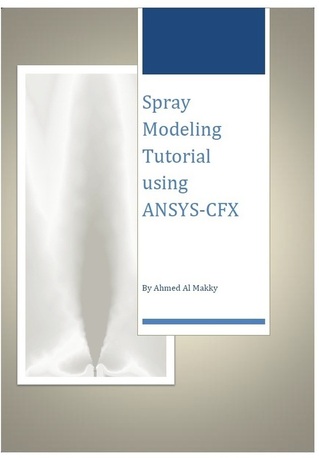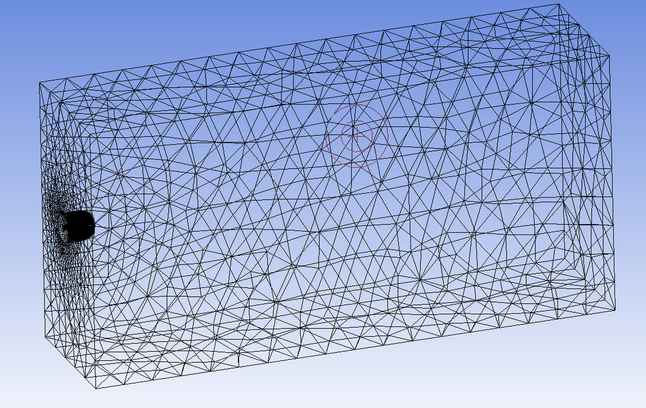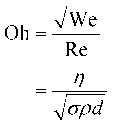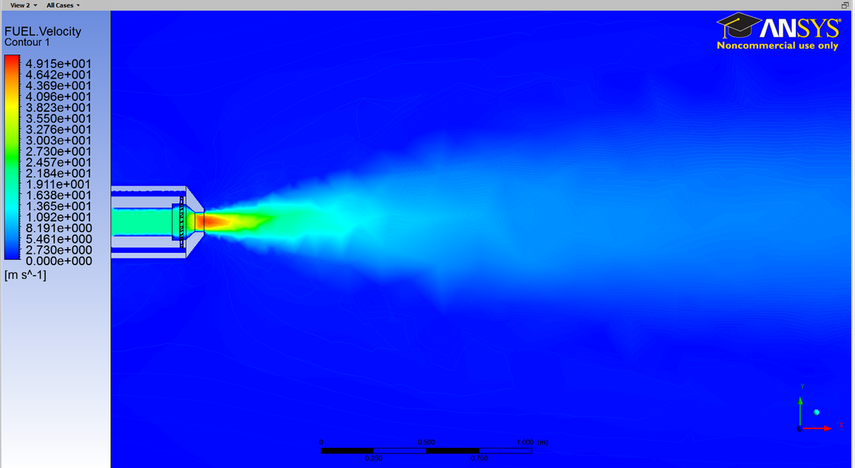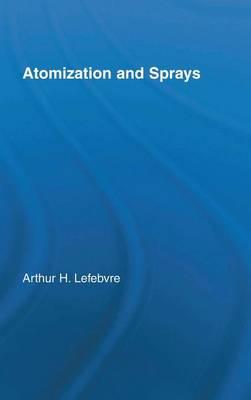Spray Modelling
This section on my website is the spray modelling one.
Important notes
1- Please don’t send me an email asking me to send you tutorials, what is available has been uploaded on the website.
2- I would very much appreciate any feedback about the tutorials, and your contribution will be stated in the tutorial, I plan to update the tutorials.
Important notes
1- Please don’t send me an email asking me to send you tutorials, what is available has been uploaded on the website.
2- I would very much appreciate any feedback about the tutorials, and your contribution will be stated in the tutorial, I plan to update the tutorials.
Spray Modelling using ANSYS-CFX
|
Spray modelling, this is a test trial of water spraying using a novel spray design. Here is the latest tutorial for spray modelling just click on the image on the right hand side to down load it. The required geometry for the spray tutorial is provided by sending me an email. Lots of engineering process have fluids sprayed in them you will need to clarify if the spray is performing its role at the optimum efficiency. In an automotive engine it has to provide the right amount of fuel at a fraction of a second that achieves a certain amount of atomization for the fuel charge. The same case applies for a gas turbine engine. Liquid sprays are also used in air conditioning units where they control the required humidity ratios.
|
Click on the image below to download the geometry for the spray tutorial:
Unsteady Spray Simulation Tutorial
A very useful tutorial available on YouTube relating to an unsteady simulation for sprays:
Simulation Data Gathering
1- You have to see what parameters from the paper where of interest and at what locations.
2- You will need to find the surface tension parameter for the sprayed fluid.
3- You will need to run an unsteady spray simulation where you have to look up the spray time duration in the experiment.
4- You will need to see from the experimental data the droplet size histogram at each time step if possible.
5- Jet stability curves are important, which are broken up in the regions break up length, these are 5 regions. The study is in relation to time.
2- You will need to find the surface tension parameter for the sprayed fluid.
3- You will need to run an unsteady spray simulation where you have to look up the spray time duration in the experiment.
4- You will need to see from the experimental data the droplet size histogram at each time step if possible.
5- Jet stability curves are important, which are broken up in the regions break up length, these are 5 regions. The study is in relation to time.
Several dimensionless numbers come of importance during the process of study.Starting with following Weber Number
Critical Weber Number: the importance of this number comes when studying droplet breakup in turbulent flows.
Ohnesorge Number
Drop breakup velocity is derived from the balance of forces between the drag force and the surface tension forces in a droplet.
Regularly asked questions about the Tutorial
Why is it with the progression of iterations the solution diverges and solution crashes. Answering Question 1:
Try refining your mesh by selecting a medium density mesh. Run the simulation again and see if you can get a convergent iteration
Why is my answer not like yours? Answering Question 2:
When defining your inflow boundary condition you have applied a 5% turbulence. That is a random number generator meaning that every simulation will differ in results but will have similarity in the general form profile.
Why did you assign a zero value for the opening boundary condition. Answering Question 3:
The domain atmospheric definition is for the reference pressure value. In engineering it’s the atmospheric pressure value at the sea. But that differs when studying different industrial applications.
Why flow back occurs?. Answering Question 4:
When I applied zero I was meaning that the dynamic pressure boundary condition is zero. Water flowing back is sometimes results from using the wrong turbulence model or due to applying wrong inflow boundary condition.
Do I have to apply buoyancy?. Answering Question 5:
No need to apply buoyancy, density of gravity. Jet flows require flow momentum which is usually specified by the inflow conditions which are either specified by velocity, pressure, mass flow….
Can I use this tutorial for other applications ?. Answering Question 6:
The tutorial example on my site is for combustion engines, which differ in approach to water sprays used in showers. The difference is mostly they have a larger particle diameter produced, sprays have a certain particle distribution size distribution based on diameter which takes the form of Gaussian distribution. Furthermore there is no need for emphasis on the evaporation of the fluid particles. Heat dose affect droplet break up but I don’t see it as important in your case because using hot water is preserve the 37 degree temperature of the person having the shower. The speed of the spray is lower furthermore its continuous so it can be considered as a steady state flow case.
Try refining your mesh by selecting a medium density mesh. Run the simulation again and see if you can get a convergent iteration
Why is my answer not like yours? Answering Question 2:
When defining your inflow boundary condition you have applied a 5% turbulence. That is a random number generator meaning that every simulation will differ in results but will have similarity in the general form profile.
Why did you assign a zero value for the opening boundary condition. Answering Question 3:
The domain atmospheric definition is for the reference pressure value. In engineering it’s the atmospheric pressure value at the sea. But that differs when studying different industrial applications.
Why flow back occurs?. Answering Question 4:
When I applied zero I was meaning that the dynamic pressure boundary condition is zero. Water flowing back is sometimes results from using the wrong turbulence model or due to applying wrong inflow boundary condition.
Do I have to apply buoyancy?. Answering Question 5:
No need to apply buoyancy, density of gravity. Jet flows require flow momentum which is usually specified by the inflow conditions which are either specified by velocity, pressure, mass flow….
Can I use this tutorial for other applications ?. Answering Question 6:
The tutorial example on my site is for combustion engines, which differ in approach to water sprays used in showers. The difference is mostly they have a larger particle diameter produced, sprays have a certain particle distribution size distribution based on diameter which takes the form of Gaussian distribution. Furthermore there is no need for emphasis on the evaporation of the fluid particles. Heat dose affect droplet break up but I don’t see it as important in your case because using hot water is preserve the 37 degree temperature of the person having the shower. The speed of the spray is lower furthermore its continuous so it can be considered as a steady state flow case.
Applying the Function Boundary Condition
A side view of the air assisted fuel spray nozzel showing the velocity contour in a cross sectional plane going through the central axis of the nozzel.
Recommended Reading
|
For researchers in the field of engines and fuel injection this book can be regarded as a bible in the field of atomization written for engineers. Has lots of experimental data. It cover statistical tools used for spray analysis. The mathematics it covers is easy. It covers in detail types of fuel sprays with their different types and field of application. If you aim to write a publication then this book should be your companion.
|
Unless otherwise noted, all content on this site is @Copyright by Ahmed Al Makky 2012-2018 - http://cfd2012.com
